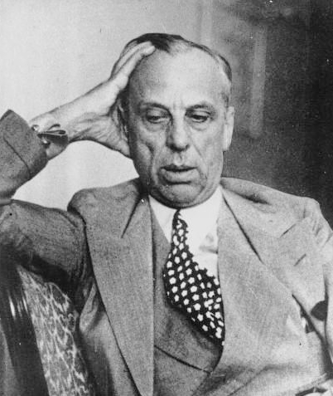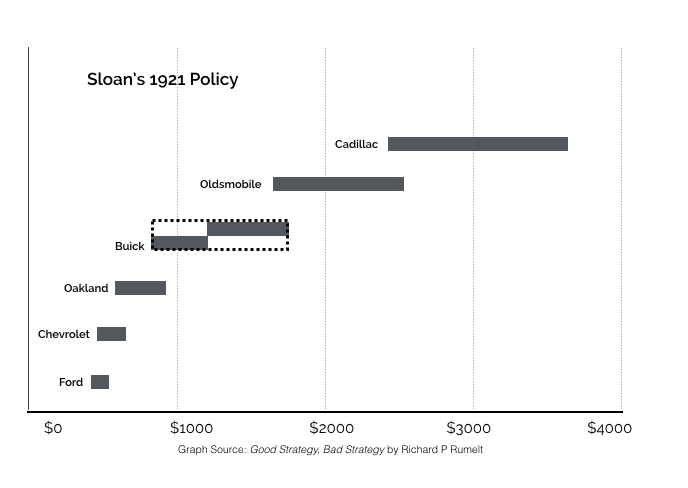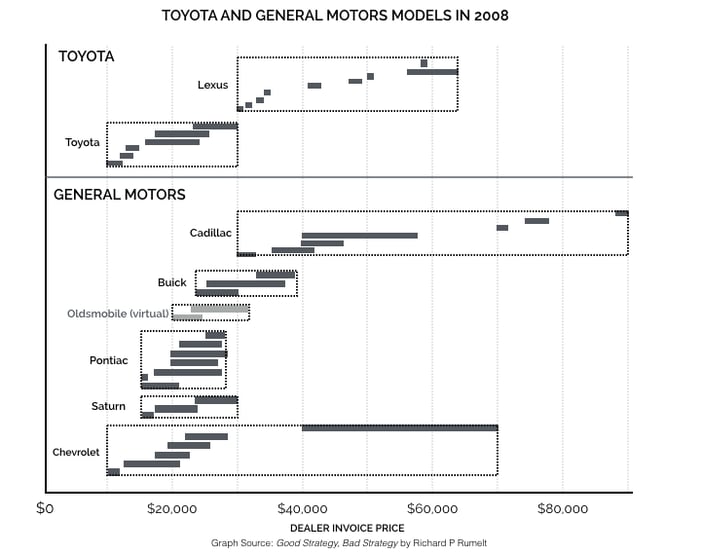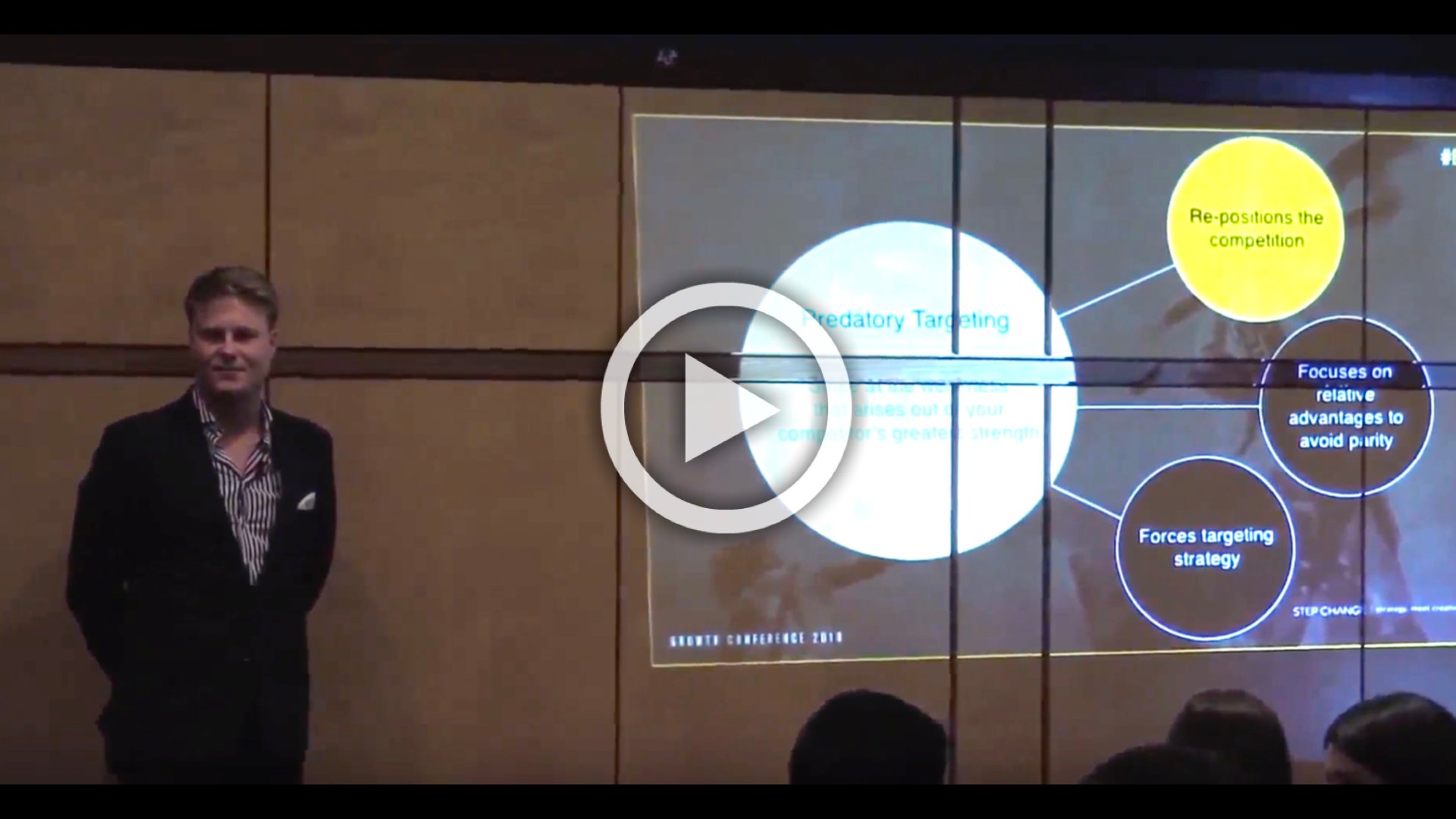You have probably seen the Steve Jobs movie that came out in 2015, and frankly, it's brilliant. Directed by Danny Boyle and written by West Wing writer/genius Aaron Sorkin, the movie is an exercise in tension as Steve Jobs confronts the people and demons of his past in the hours before three major product launches.
On several occasions in the film Steve confronts John Sculley, the Apple CEO who Steve recruited and was ultimately ousted by. In a twist of events, Steve returns to Apple in 1997, ousting Sculley and then killing 70% of the Apple product range. Did he do it out of spite? Revenge? Sculley certainly thinks so. Or was Jobs claim that he just “really hates styluses” the real reason?

Actually, it's a lesson in range architecture.
Range architecture is the structure of your products, sub-brands and price points. A well designed range architecture will help your customers pick the right product at the right price, helping them navigate sometimes countless choices.
One of the most famous range architectures was developed by Alfred P. Sloan of General Motors in 1921.
His so-called Ladder of Success gave each car brand a price point that wouldn’t conflict with any others.
It was said that you could tell who lived in which house by which car was parked out front — a Cadillac suggested a CEO, the Buick was the factory foreman. Sloan's range architecture made the question “which car is right for me?” a simple one, not a stressful one, and so General Motors thrived.

Of course General Motor’s range architecture was too beautiful to last. General Motor's incentive schemes rewarded each brand individually and ultimately tempted brand managers to try and capture just a few more customers by adding in just a few more options.
More options meant more prices, more models and more choice. This example of entropy lead to the very complex brand architecture that General Motors had in 2008, right as they were facing bankruptcy.

Barry Schwarz’s work on The Tyranny of Choice makes it clear that fewer choices lead to more purchases, faster and with less post-purchase regret. While common sense would say that more choice gives more utility, behavioural economics shows that complex choices usually result in no choice at all — and more importantly, no sale.
Which brings us to Apple. When Jobs returned in 1997 the company was, according to Jobs, “90 days from being insolvent". Sales were dismal. The story goes that Steve was asked by a friend which computer she should buy. Steve was stumped. Despite hundreds of products, there was no clear answer.
In fact, Apple’s range architecture was as messy in 1997 as General Motors’ was in 2008. The company had been making multiple versions of products to satisfy requests from retailers, including twelve versions of the Macintosh computer.
After weeks of meeting with product people he had heard enough. According to Walter Isaacson in the book Steve Jobs, Steve shouted “Stop!” in the middle of a product meeting and said, “This is crazy.”
Taking a marker he drew a chart that was to form the basis of Apple’s product range for years to come. The simple insight was to help people choose a computer using only two questions — are you an everyday consumer or pro? Do you want portable or desktop?

In this one bold move, 70% of Apple’s range was cut. One year later, the nearly bankrupt company turned a very healthy $309 million profit. Today the company is worth more than $520 billion.
So why did Apple really kill the Newton? Spite? Keeping fingers free? The real story actually points to simplicity. The simpler a product range, the easier it is to make a choice, the more sales you can get.
So what do these two case studies tell us about range architecture? At Step Change, we reviewed more than thirty range architectures last year and there’s one principle that surfaced time and time again:
Make it easy for the customer.
A range should only be expanded where it clearly makes the choice easier for a customer segment. In the right situation, adding a choice to the range can increase average weight of purchase, make the sales cycle shorter and even reduce post-purchase regret. But before you add anything new pull out the pruning shears and cut as much as you can.
Your customers won’t even notice just how much simpler things are — so they won’t thank you. But your finance team will.
















